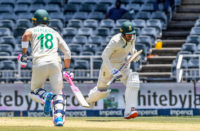Cricket is a simple game. Really, it’s very straightforward.
However, the possibilities of a multitude of different outcomes can arise every time the bowler releases a ball. Some will bring you cheers of victory, while others will make you feel miserable. This is why India still lives and breathes cricket.
Historical manuscripts dating back to the 16th century contain records of the game. It has spread from its humble beginnings to many countries around the globe.
Today, the International Cricket Council has 12 full members and 94 associate members. Each of the 12 full member nations has full voting rights. They can compete against one another in Twenty20 matches, One Day Internationals (ODI), and test matches.
Modern technological advances have made it easier for umpires, the adjudicating bodies on the field, to make correct decisions on the field by reducing uncertainty in the list of factors that they must consider.
Before diving into the technologies that help with cricket matches, it should be noted that technology has an effect on cricket betting as well. From the rise of the internet, to smartphones and blockchain technology, cricket betting has become very accessible and secure. Many fans bet on the cricket results at Lottoland from their mobiles.
5 technologies used during cricket matches
These are just a few of the technologies that assist the third umpire.
HawkEye Ball Tracking System
In 2001, this innovation was born. The technology was created to help the bowler see the ball’s trajectory once they release it. In addition, broadcasters make extensive use of the technology to provide additional views to viewers and commentators on the Leg Before Wicket (LBW).
Multiple cameras are strategically placed around the ground to provide a three-dimensional representation. This rendering is used to help make decisions regarding LBW appeals. It is also implemented by the Umpire Decision Review System.
HotSpot
The implementation of the HotSpot technology was a significant milestone in the technological advancements in cricket. The ball’s heat signature is detected by an advanced infrared detection device.
HotSpot’s ability to detect the smallest edges and hear bat-pad LBW calls is crucial in this regard. The technology uses cameras placed on both sides of the ground to provide information based on the heat friction generated by a collision. As a result, it is difficult to implement widely, even though its results are extremely accurate.
Zingwicket System: bringing zing to cricket
LED wickets, a seemingly innocuous invention that is also known as the Zing wicket system, have revolutionized the way that the third umpire uses technology in cricket.
It is made up of a microprocessor in the bail, which will light up in 1/1000ths of a second when it is removed from the stumps.
Before the Zing wicket system, umpires had difficulty determining whether a run-out was valid or whether a claim for stumping was valid. However, both on-field and off-field umpires have been able to make better decisions thanks to the Zing bail system.
Ultra-Edge Technology: The Lines that Judge Victory or Lose
The soundwave that is displayed on-screen by the third umpire when the batsman touches the ball with their bat is a mainstay in any cricket match. This is the cutting-edge technology in play.
A microphone is embedded into the stump to capture the sound that the ball makes when it comes in contact with the bat. An oscilloscope interprets this sound frequency into waves.
The bat striking the ball produces a brief burst of high-frequency sound. Ultra-edge technology is used by the third umpire to determine if this waveform matches any of the sample soundwaves.
Stump Camera
Stump cameras are mini-cameras that are embedded within one of three stumps. They are used in professional matches of cricket. The Stump cameras are used to capture the shots faced by the batsman.
The Stump camera has been a vital part of cricket broadcasting for quite some time and is also used in major leagues as well as cricket series like World Cup. The BBC first used stump cameras in the ’90s. These stump cameras can be connected to computers via underground wire or cable.
These are the main features of a stump camera:
- It allows for clear footage of the cricket field.
- A stump Cam provides a unique angle for viewers to replay and analyse shots taken by the batsman.
- It can also provide valuable information on the foot movements of batsmen as well as dismissals that can be used to further analyse.
- Finally, this cam serves as a handy medium for judging dismissals for stumping, run-outs, and close-catching positions.
Many technological innovations have been applied to cricket with great success. In fact, these innovations have had a dramatic impact on the sport. If you want to add another technology we didn’t mention, please do so in the comments section.















